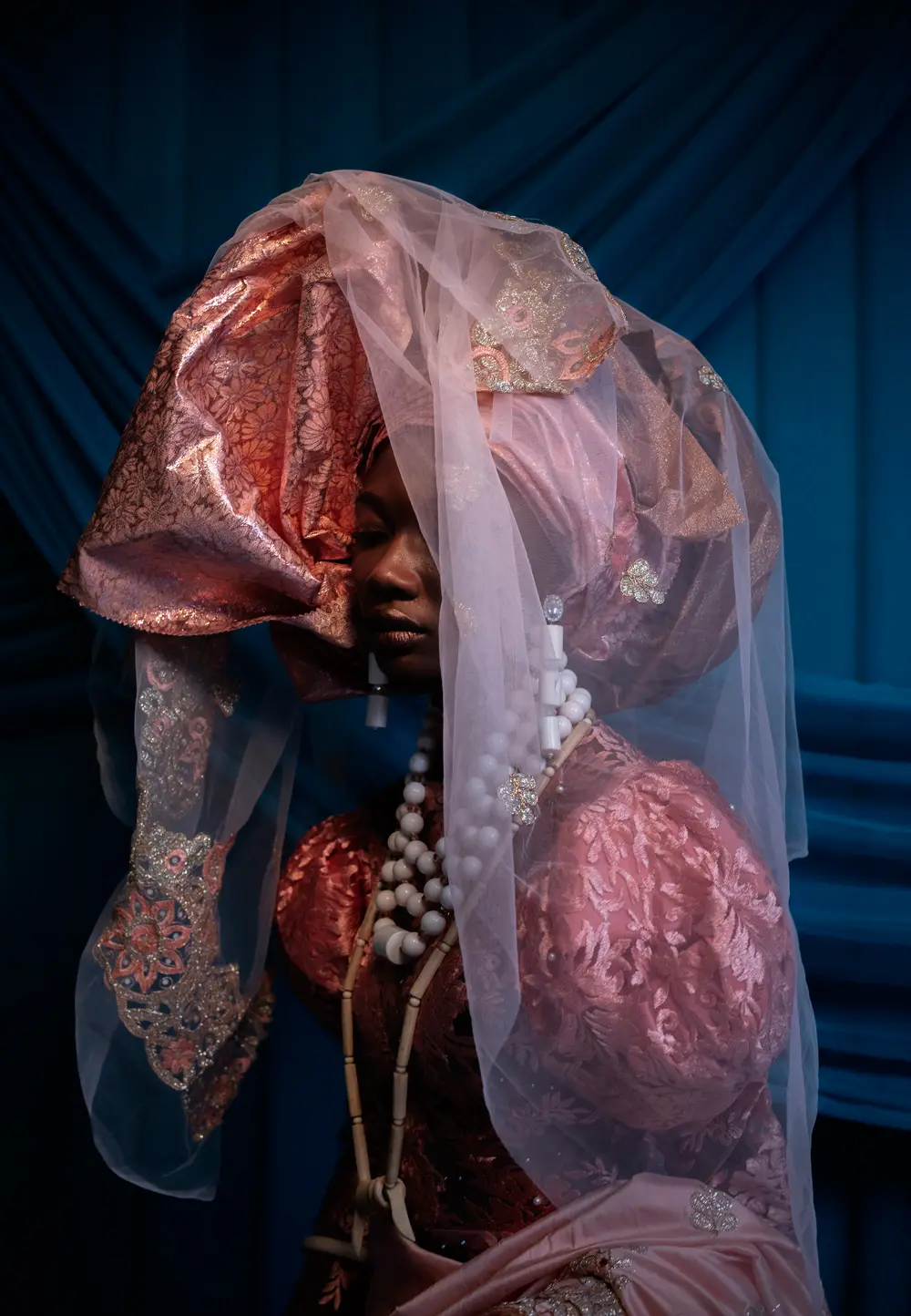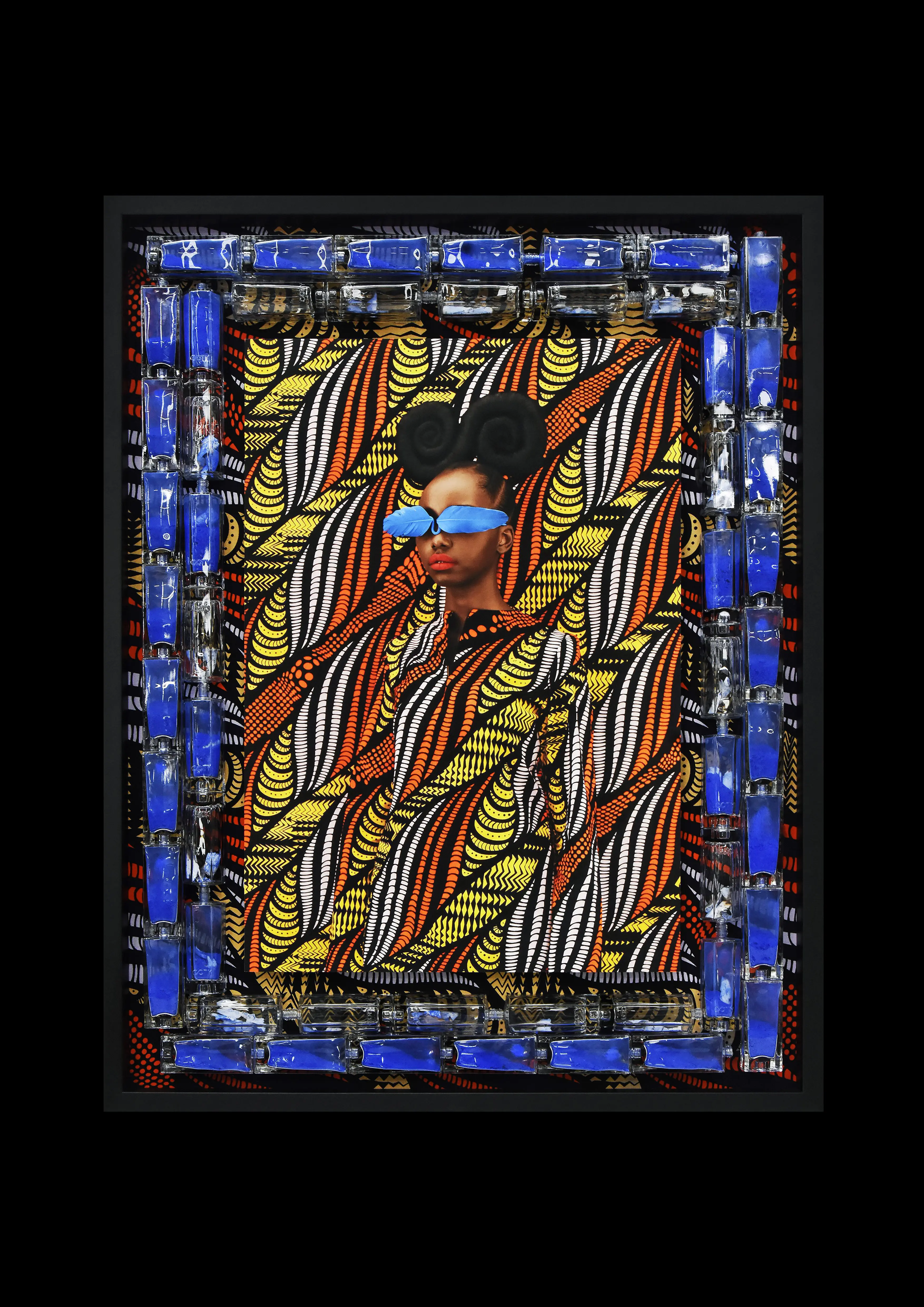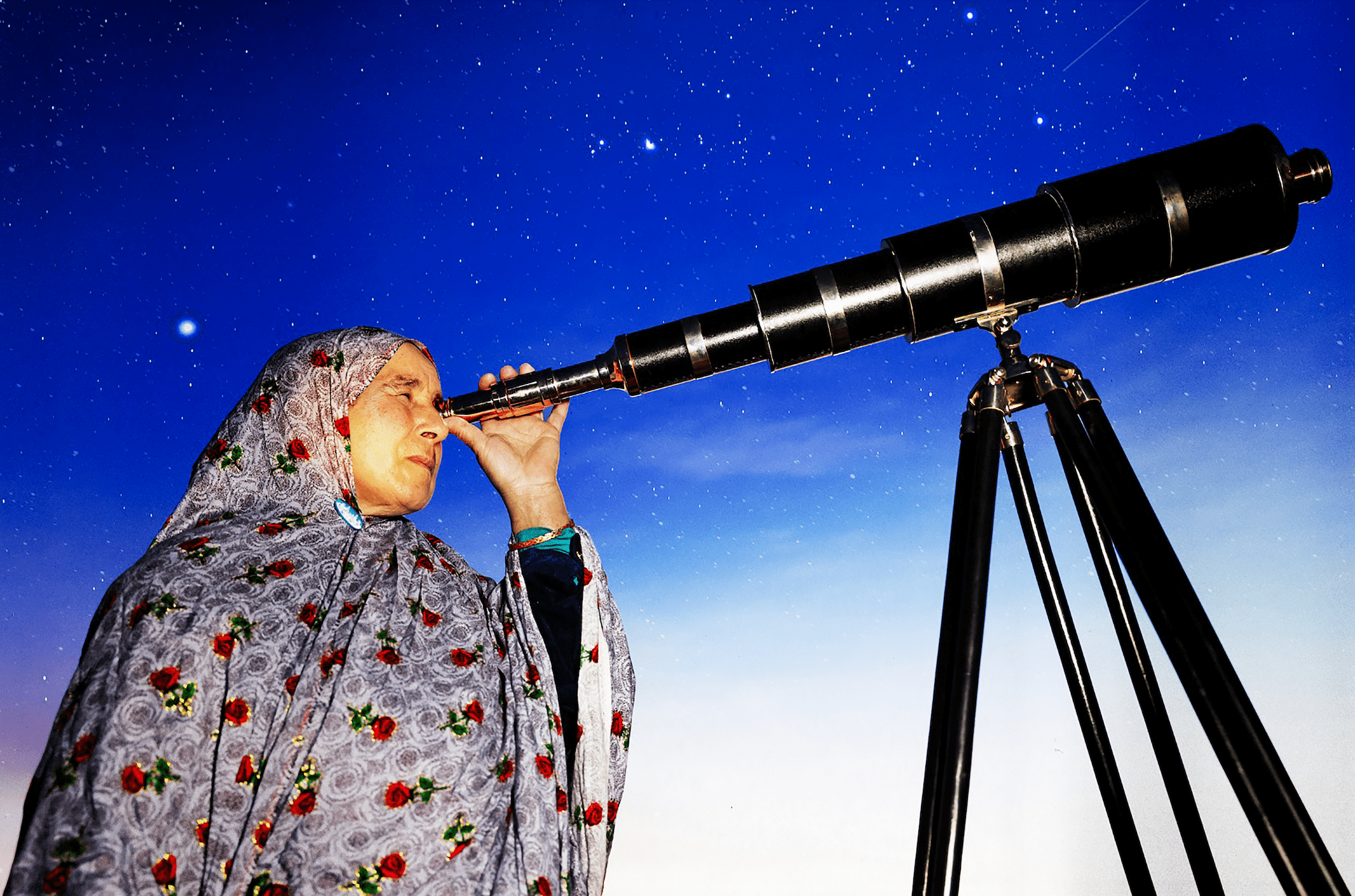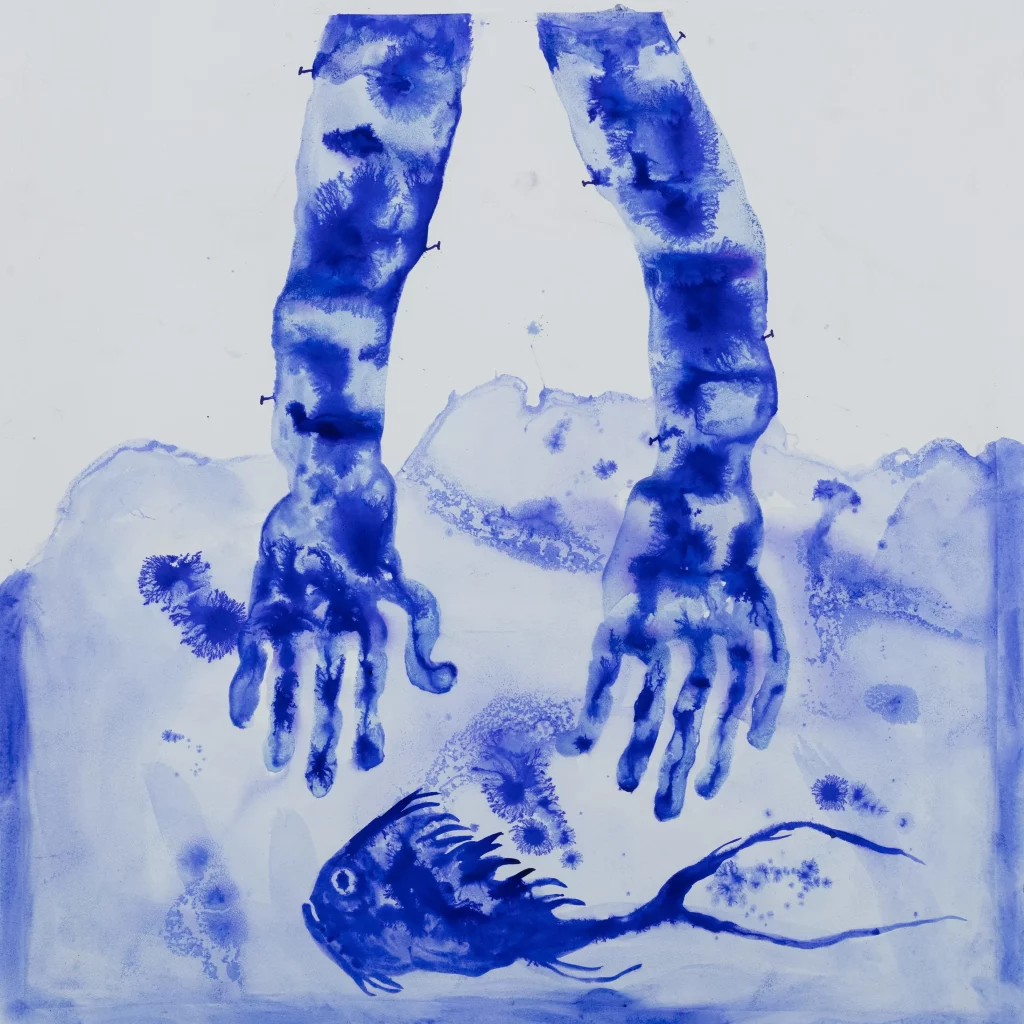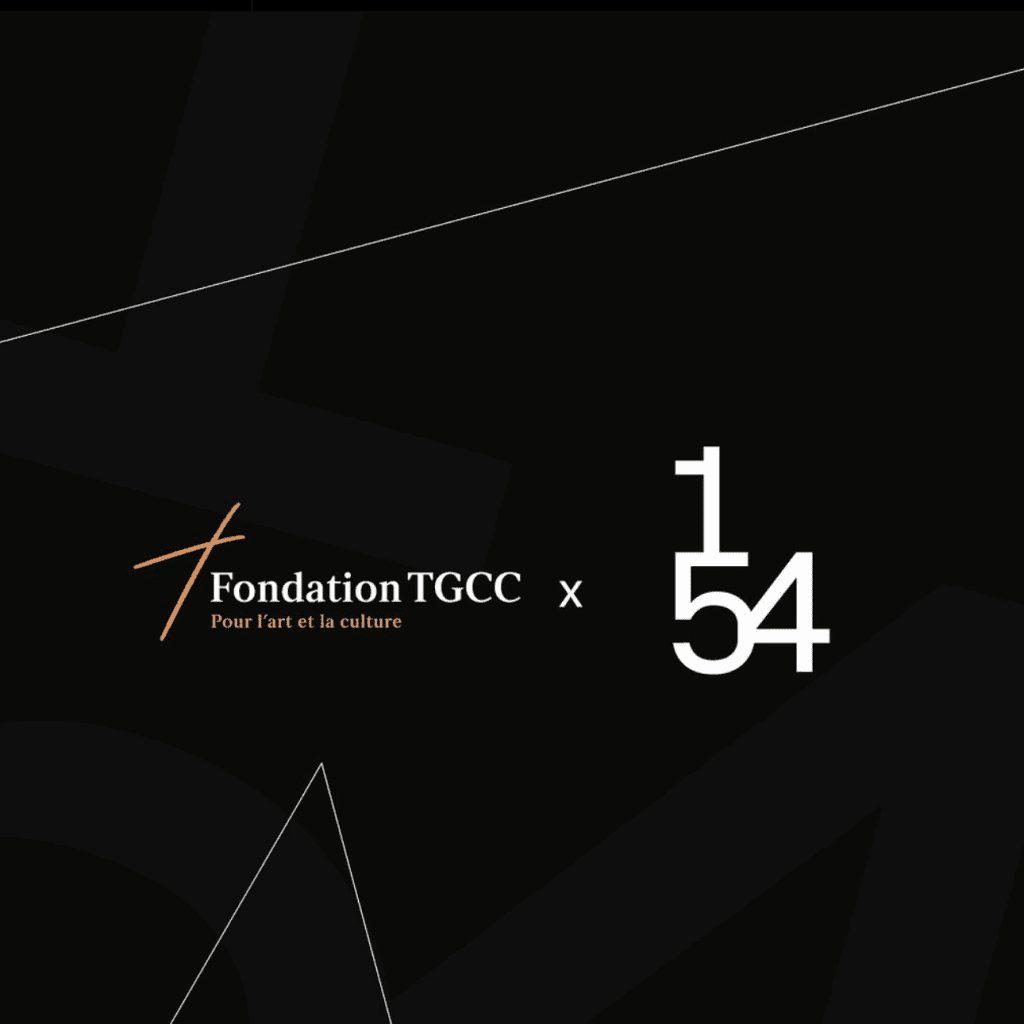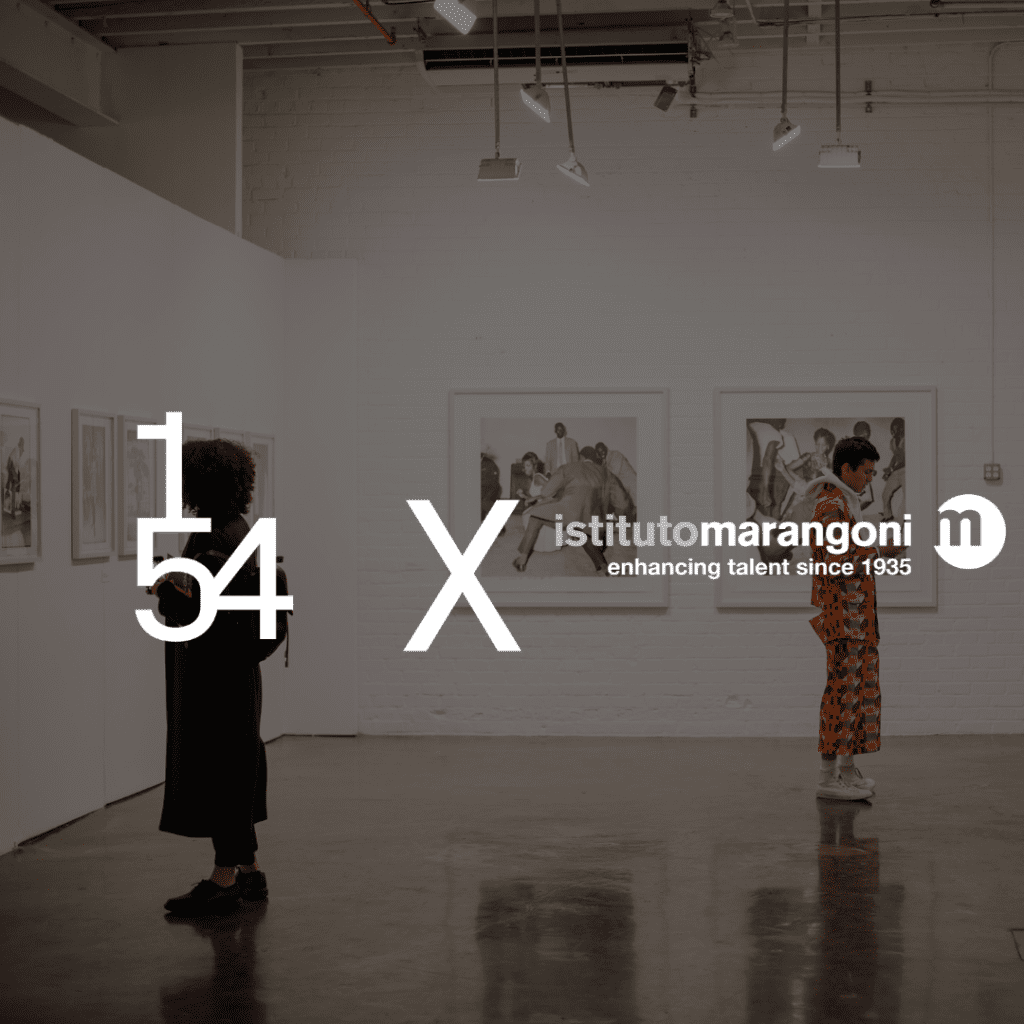We had the chance to interview Lakin Ogunbanwo before the exhibition of his work in Marrakech, he told us about his creative process and his newest body of work.
Represented by WHATIFTHEWORLD, Ogunbanwo will exhibit his recent series E Wà Wo Mi (*come look at me). The series explores in an unusual way the culture surrounding Nigerian brides and marriage ceremonies with particular focus on the traditional ceremonial wear of the Yoruba, Igbo and Hausa-Fulani tribes, amongst others.

This series can be seen as a further investigation of your personal heritage, moving your lenses to the role of women and femininity in contemporary Nigeria. Can you tell us more about the creative process behind this project and why you decided to use veiled portraiture to document the complexity of the bridal tradition in your home country?
The idea for this series came to me at a friend’s wedding, where I suddenly became incredibly aware that as an observer I was not attune to the changes that would ensue this commitment ceremony, but that the bride, who was my friend, was deeply aware of them and the wedding’s role in catalysing these.

The work is not meant to challenge what it means to be a bride or the expectations of this role, as I am not in the position to determine this, I have purely made this series as an observer. If this work does challenge any idea, it is that there is only one way to get married or that Nigerian culture is only one thing: and that these are dictated by a dominant culture and are often homogenised.

I have used the veil in these works as a sort of unifier for the shared experiences of Nigerian brides and the expectations placed on them from each ethnic group. It feels to me that brides perform womanhood and femininity (particularly on the wedding day) according to how it has been constructed by their ethnic communities and while these performances might vary, the necessity for this performance is common between all.
As in your previous series “Are We Good Enough”, in which worn hats become cultural signifiers in Nigeria, you usually subvert gender and aesthetic norms to question the monolithic mainstream narratives of Africa in the West. Why is this important for you and how do you manage to achieve that?
With the world’s current interest in Africa, it is important for me to speak on ‘Africanness’ within my own Nigerian context and to self-narrate what this means for me. Being Nigerian, I have felt a need to document the complexities of my culture in order to resist the West’s monolithic narrative of Africa.

You have recently been involved in the photoshoot for the play “Three Sisters”, Inua Ellams’ adaptation of Chekhov’s masterpiece, where the iconic Chekhov’s characters are relocated to 1960s Nigeria. The production is currently staged at the National Theatre in London and running until February 19th, what was your first reaction when approached for this special commission?
I was incredibly honoured and humbled to have gotten the call and invitation to photograph this poster. The photoshoot was ultimately centred around the relationship between these sisters; what they mean to one another and what roles (beyond merely familial siblings) they play in one another’s lives.
How was your experience of working with the three main actors Sarah Niles, Natalie Simpson and Rachael Ofori?
It has been an amazing experience. It was also just so great to see them get into character and interact in this way on set.
To watch the ‘behind the scenes’ of Lakin’s recent work, visit the link below:
